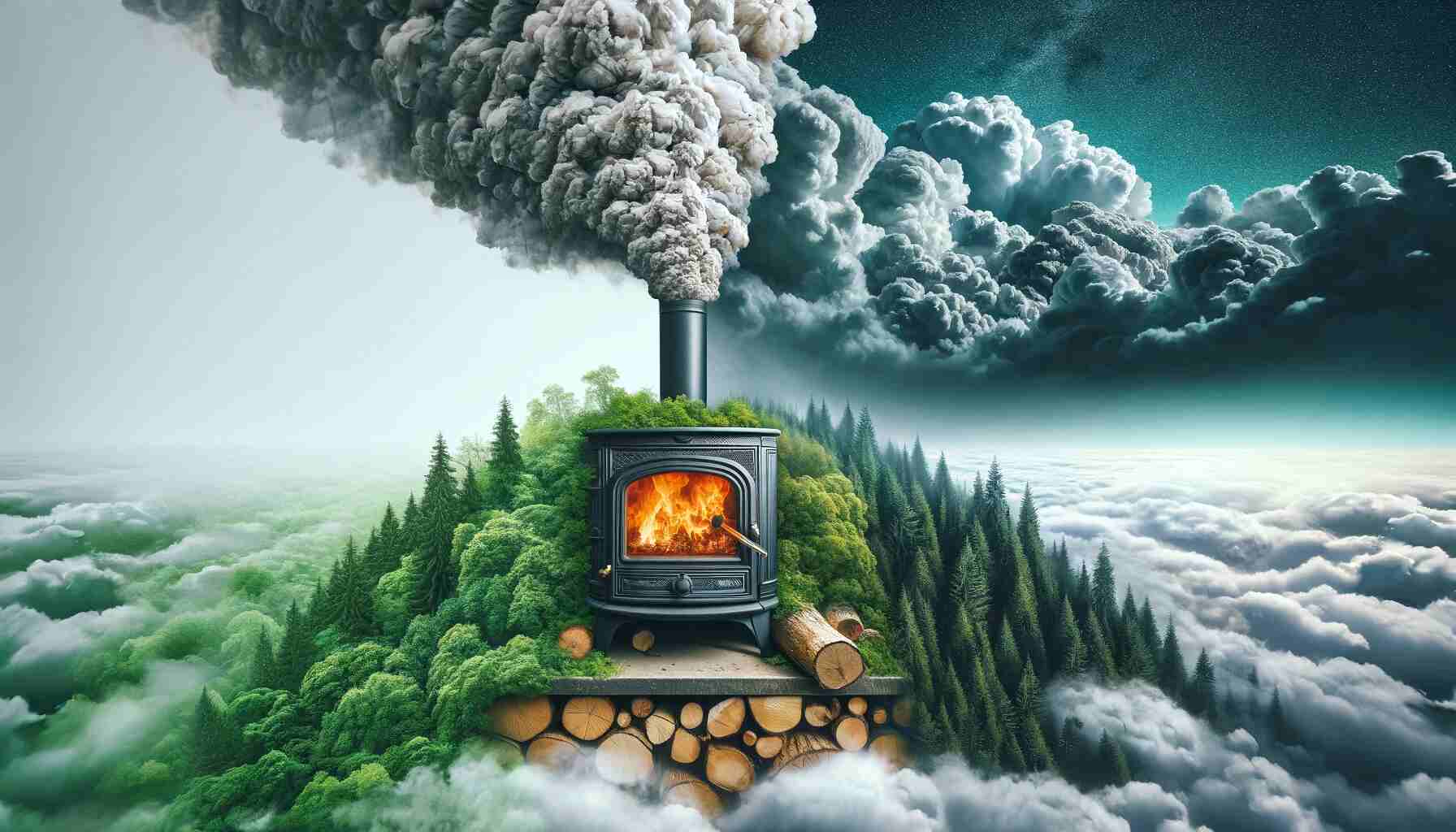Wood burning stoves have long been a source of warmth and comfort in homes around the world. However, concerns about their environmental impact have grown in recent years, prompting questions about whether they are truly a sustainable heating option.
Understanding Wood Burning Stoves
Wood burning stoves are a traditional form of heating that relies on burning wood logs to generate heat. They have been used for centuries and remain popular in many households due to their rustic charm and perceived cost-effectiveness. However, their environmental impact has come under scrutiny, particularly in light of concerns about air quality and climate change.
The Environmental Impact
1. Emissions
One of the primary concerns regarding wood burning stoves is their contribution to air pollution. When wood is burned, it releases various pollutants into the atmosphere, including particulate matter, carbon monoxide, nitrogen oxides, and volatile organic compounds. These pollutants can have detrimental effects on air quality and human health, especially in areas with high levels of wood burning activity.
2. Carbon Footprint
While wood is often considered a renewable fuel source, burning it releases carbon dioxide (CO2) into the atmosphere, contributing to the greenhouse effect and climate change. While trees do absorb CO2 as they grow, the carbon released during combustion adds to the overall carbon footprint. Additionally, the transportation of wood fuel can further increase emissions if not sourced locally.
3. Deforestation
Another concern associated with wood burning stoves is the potential for deforestation and habitat destruction. In some regions, the demand for firewood can lead to unsustainable logging practices, threatening biodiversity and ecosystem health. It’s essential to consider the source of wood fuel and choose sustainably harvested or reclaimed wood to minimize environmental impact.
Addressing Common Misconceptions
1. Efficiency
While older wood burning stoves were notorious for their inefficiency and high emissions, modern models are designed to be much cleaner and more efficient. EPA-certified wood stoves incorporate advanced combustion technology and emission control systems to reduce pollutants and maximize heat output. Proper installation and maintenance also play a crucial role in optimizing efficiency and minimizing environmental impact.
2. Renewable Energy
Wood is often touted as a renewable energy source, but its sustainability depends on responsible harvesting and management practices. Sustainable forestry practices, such as selective logging and reforestation, can ensure the long-term viability of wood as a renewable fuel source. Additionally, using waste wood or biomass residues from forestry and agricultural activities can further enhance the sustainability of wood burning stoves.
3. Alternative Fuels
While wood burning stoves remain popular, there are alternative heating options available that may have lower environmental impacts. Pellet stoves, for example, burn compressed wood pellets made from sawdust and other wood waste, producing fewer emissions and offering greater convenience. Solar, geothermal, and heat pump systems are also viable alternatives for reducing reliance on fossil fuels and minimizing environmental impact.
Mitigation Strategies
1. Proper Operation
Properly operating and maintaining wood burning stoves is essential for minimizing emissions and maximizing efficiency. This includes using seasoned firewood with low moisture content, avoiding smoldering fires, and ensuring adequate ventilation to prevent incomplete combustion and excessive smoke.
2. Emission Control Devices
Installing emission control devices, such as catalytic converters or secondary combustion chambers, can further reduce pollutants emitted by wood burning stoves. These devices help to promote more complete combustion and capture harmful gases before they are released into the atmosphere.
3. Sustainable Practices
Choosing sustainably sourced wood fuel and practicing responsible forestry management can help mitigate the environmental impact of wood burning stoves. Look for certified wood products from reputable suppliers and consider using alternative fuels or energy-efficient heating systems where feasible.
Conclusion
Wood burning stoves have both positive and negative environmental impacts, and whether they are “bad” for the environment depends on various factors such as their efficiency, fuel source, and how they are operated and maintained.
On the positive side, wood is a renewable resource, and when harvested sustainably, it can be considered a relatively eco-friendly fuel option. Additionally, modern wood burning stoves are designed to be much cleaner and more efficient than older models, with advanced combustion technology and emission control systems that help reduce pollutants.
However, there are also negative environmental impacts associated with wood burning stoves. When wood is burned, it releases carbon dioxide (CO2) into the atmosphere, contributing to climate change. Additionally, incomplete combustion can produce pollutants such as particulate matter, carbon monoxide, and volatile organic compounds, which can have adverse effects on air quality and human health, particularly in areas with high wood burning activity.
Furthermore, the sourcing of wood fuel can also have environmental implications. Unsustainable logging practices can lead to deforestation, habitat destruction, and loss of biodiversity. It’s essential to choose sustainably sourced wood and practice responsible forestry management to minimize these impacts.
In summary, while wood burning stoves can provide efficient and cozy heating, they do have environmental consequences that need to be considered.
Here Are The Best Firewood To Burn For Wood Stoves And Fireplaces With Charts










